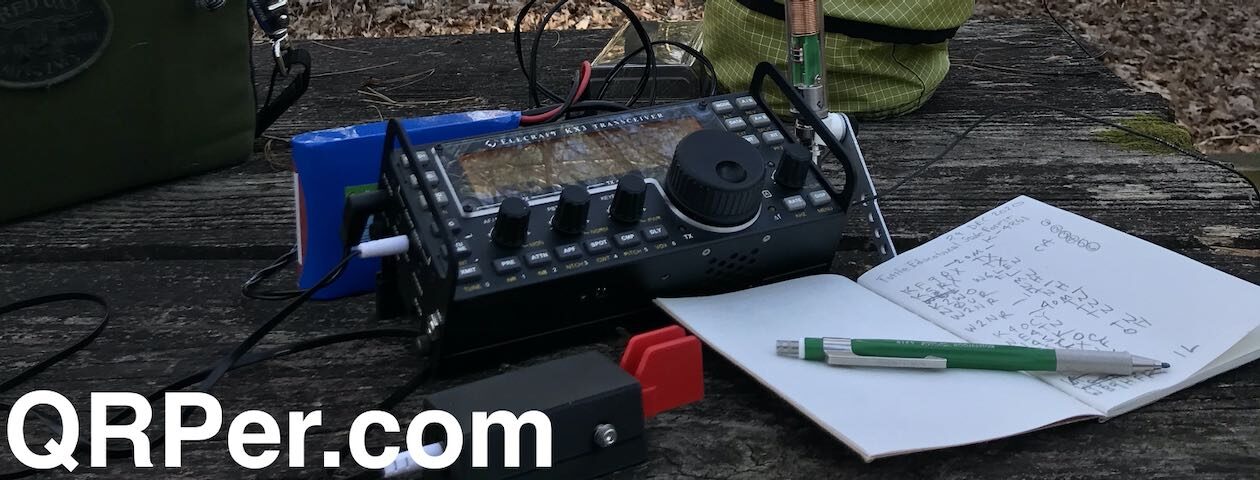Activating on the Road: Pikes Peak State Park is Where???
by Brian (K3ES)
 During our road trip across the country and back (Six Weeks and 7300 Miles: Activating on the Road), Becky and I planned our route to enable me to complete at least one Parks on the Air (POTA) activation in each state across the American west. One of the first parks that I activated on the trip was Pikes Peak State Park (US-2311) in Iowa.
During our road trip across the country and back (Six Weeks and 7300 Miles: Activating on the Road), Becky and I planned our route to enable me to complete at least one Parks on the Air (POTA) activation in each state across the American west. One of the first parks that I activated on the trip was Pikes Peak State Park (US-2311) in Iowa.
You heard that right, Iowa.
This was one of my favorite activations during our time on the road. I had an amazing view of the Mississippi River Valley while I was operating, and since this park was less than an hour from our final destination for the day, I had enough time to work plenty of contacts.

When we arrived in the park, I took Molly the POTA Dog for a walk around the park. She is always excited about a walk (particularly after riding in the truck for several hours), and it gave me the opportunity to scout the park for a good location to set up my station for the activation. The park is located on a bluff, hundreds of feet above the river, with walking paths and overlook platforms offering great viewpoints.
A number of park visitors were enjoying the overlook platforms and the pathways, and I prefer to keep my station out of the way, so I settled on using a path-side stone bench for my activation. The bench was located under some trees that provided both shade and support for my antenna, a perfect location.
Activating US-2311

When we returned to the parking area, Becky took Molly, and set out on a hike to nearby Bridal Veil Falls. I picked up my radio pack, and returned to the bench. I tossed my throw line over a tree branch, and hoisted the Tufteln End-fed Random Wire (EFRW) antenna into a vertical configuration. Laying out the 17 ft counterpoise wire along the ground, and attaching a 15 ft RG316 feedline completed the antenna deployment.
I placed my KX2 next to me on the bench, connected the feedline, power cable, earbuds, and VK3IL pressure paddles. I opened my log book, secured it to a clipboard balanced on my knee, and was ready to get on the air.



As always for new-to-me parks, I scheduled my activation in advance on POTA.app while I had a reliable internet connection. That way, I was good to go, even if cellular service was unavailable at the activation site. Since I operate in CW mode, I just had to find an open frequency and begin calling CQ.
The Reverse Beacon Network (RBN) picked me up, generated an automatic POTA spot, and calls began coming in. In truth, even when I have data service available in a park, I seldom do more than monitor continued automatic spots. The RBN even updates my spot when I change frequency or band. The RBN spotting function works spectacularly well for a CW operator, even at QRP power levels.
Results

I stayed on the air until after Becky and Molly returned from their walk. In about 40 minutes on the air, I logged 27 CW contacts on the 20m and 30m bands. The pace was steady, and I was able to work my way through all of the callers. I am grateful to each of the hunters who tracked down my QRP signal, and stuck with me to complete a contact.
During our 6-week excursion, solar conditions were stable, and propagation was great. The Tufteln EFRW antenna was quick to deploy, quick to pack, and performed impressively when paired with the KX2’s excellent internal tuner.
Gear
Note: All Amazon, and eBay links are affiliate links that support QRPer.com at no cost to you.
- Elecraft KX2
- SideKX end-panels and cover for the KX2
- Bioenno 3 Ah LiFePO4 battery
- Tufteln EFRW antenna with 9:1 Unun, 35 ft radiator, and 17 ft counterpoise
- 15 ft RG316 feedline with BNC male connectors at each end
- Homebrew VK3IL-designed, pressure paddles
- Generic earbuds
- Rite in the Rain No. 946 notepads
- Pentel Twist-Erase mechanical pencil in 0.9mm
- US M7 Army Light Weight Service Mask pouch: WWII vintage, canvas construction
- Arborist kit with 2mm Marlow Excel line and Petzel 9 oz (250g) throw bag and Tom Bihn Small Travel Tray stuff sack



Final Thoughts
If you are ever find yourself in northeastern Iowa, I definitely recommend taking the time to see Pikes Peak State Park. Activate this park, if you can. The views are amazing. If you can bring binoculars, or a long lens for your camera, so much the better. We could see a large number of birds standing along sand bars in the river, but could only guess at the species.

Becky enjoyed the walk to Bridal Veil Falls. It involved moderate elevation changes along the trail. She was disappointed with the Falls themselves, because water flow was minimal after a dry period in early autumn. The Falls should be much more impressive in the spring.



Best 73 de Brian – K3ES, XYL Becky, and POTA Dog Molly





















































































